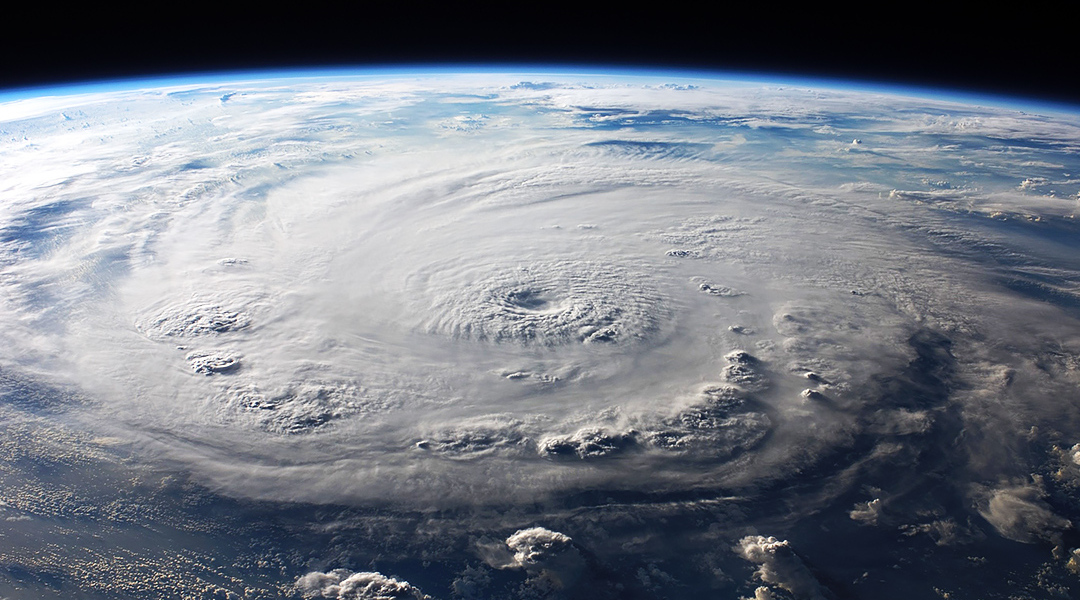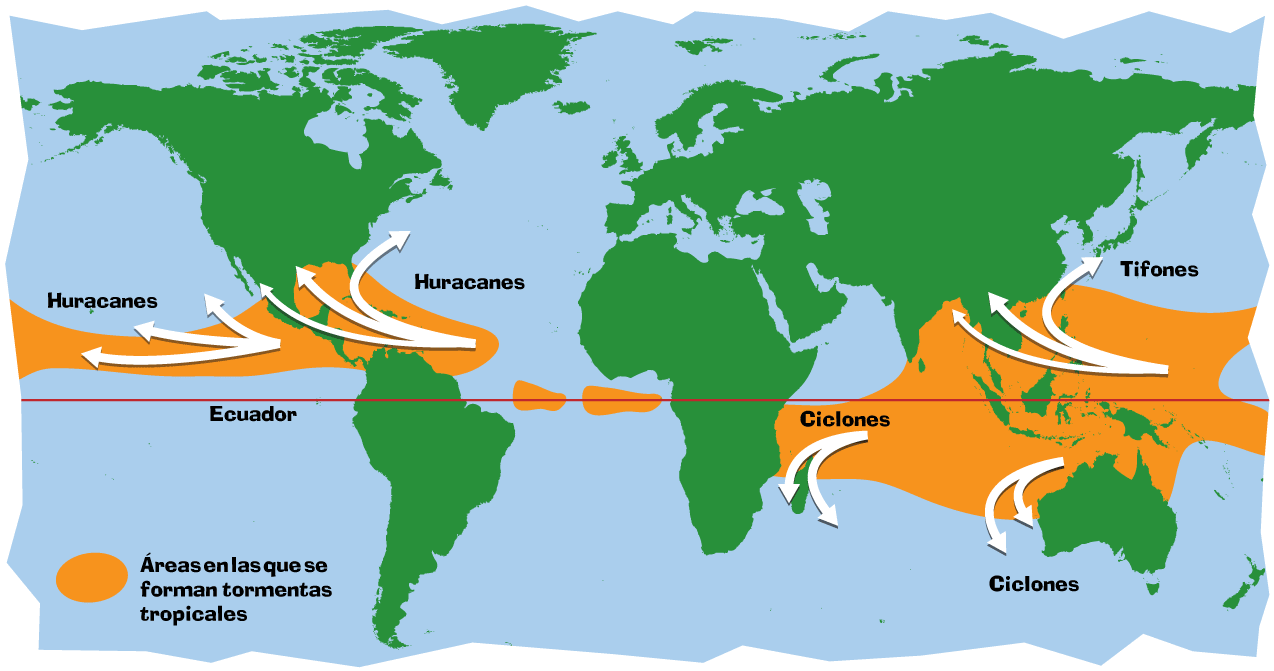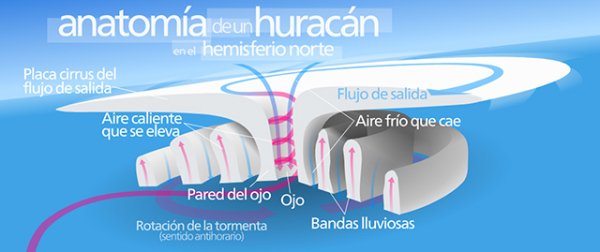¿How do hurricanes form?
Every year, between June and November, we witness the power of nature: the winds reach high speeds and heavy rains cause flooding. It's hurricane season.
Although it is difficult to specify which was the first recorded hurricane, there are documents dating from 1492 to 1524, which attests to the existence of the annual cycle of hurricanes. The first image of a hurricane captured by a satellite was recorded in 1961, its name was "Esther" and it was a category 4 tropical cyclone.

But how much do we know of these meteorological phenomena capable of destroying entire cities?
What is a hurricane?
We should begin by noting that the Dictionary of the Royal Spanish Academy states that a hurricane is a: "Very impetuous and fearsome wind that, like a whirlwind, turns in large circles, whose diameter grows as it moves away from the areas of tropical calm, where it usually has its origin ". Far from the linguistic entanglements of which the SAR draws, its definition is partially correct, since, indeed, the tropical cyclones that form on the Atlantic Ocean and the Eastern Pacific Ocean receive the name of "hurricane".
A hurricane is, in the first instance, a tropical cyclone, a meteorological term that is used to refer to a stormy system where factors such as low pressure, wind and rain intervene. They are said to be tropical because they form in the intertropical regions of the planet (between the Tropic of Cancer and the Tropic of Capricorn), but also because their formation comes from tropical air masses of marine origin.
On the other hand, the name cyclone refers to the rotating nature of these types of storms, which rotate counter-clockwise in the northern hemisphere and clockwise in the southern hemisphere.

How many types of tropical cyclones are there?
Depending on the speed at which tropical cyclones occur can be of three types:
Tropical depression: when it comes to winds whose maximum speed at sea level is up to 62 km / h.
Tropical storm: it is a hot core system whose winds reach between 63 and 117 km / h.
Hurricane: hot-core tropical cyclone that reaches a speed at sea level of 118 km / h and above.
What does it take for a hurricane to form?
For a tropical cyclone to take place, at least five fundamental factors must converge:
A pre-existing atmospheric disturbance that includes storms.
Oceanic temperatures of at least 27 C ° and maintained from the sea surface to a minimum of 15 meters below it.
Weak winds in the high levels of the atmosphere that do not change much in direction and speed to cause a lot of evaporation and that begins to ascend.
The rotation of the earth that provides circular movement to this atmospheric system.
The humidity that allows a greater speed of evaporation.
How is a hurricane formed?
Tropical cyclones take energy from the condensation of moist air. This means that they use hot and humid air to produce. Unlike other cyclonic storms, tropical cyclones are characterized by the heat mechanism that feeds them and converts them into stormy systems known as "warm core".
The air moves up and away from the earth's surface, then the cold air around it fills the low pressure area. Subsequently, the cold air becomes warm and also rises: each time the air rises, the surrounding air rotates to take its place. When the warm air cools it forms clouds, which rotate and grow together with the air thanks to the heat of the ocean and the water that evaporates on the surface.

How are hurricanes measured?
Hurricanes are measured by category on a scale called Saffir-Simpson, which classifies storms according to wind intensity, wave effects and their ability to generate floods. There are five categories of hurricanes according to this scale, with 1 being the least dangerous and 5 the most damaging.
What is the difference between hurricane, typhoon and cyclone?
It is necessary to clarify that a hurricane, a typhoon and a baguio, are tropical cyclones and that they receive those names according to the different parts of the world where the phenomenon is registered. In the Indian Ocean and the Sea of Japan it is called typhoon; in the Philippines it is known as baguí; in the Caribese he calls them a hurricane. A curious fact: in Australia a tropical cyclone is called "Willy-willy".